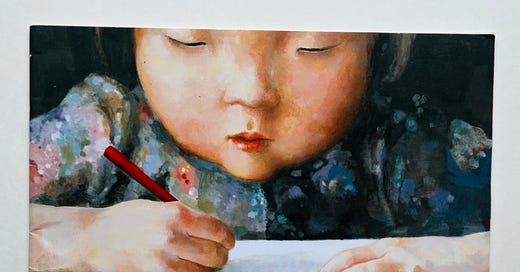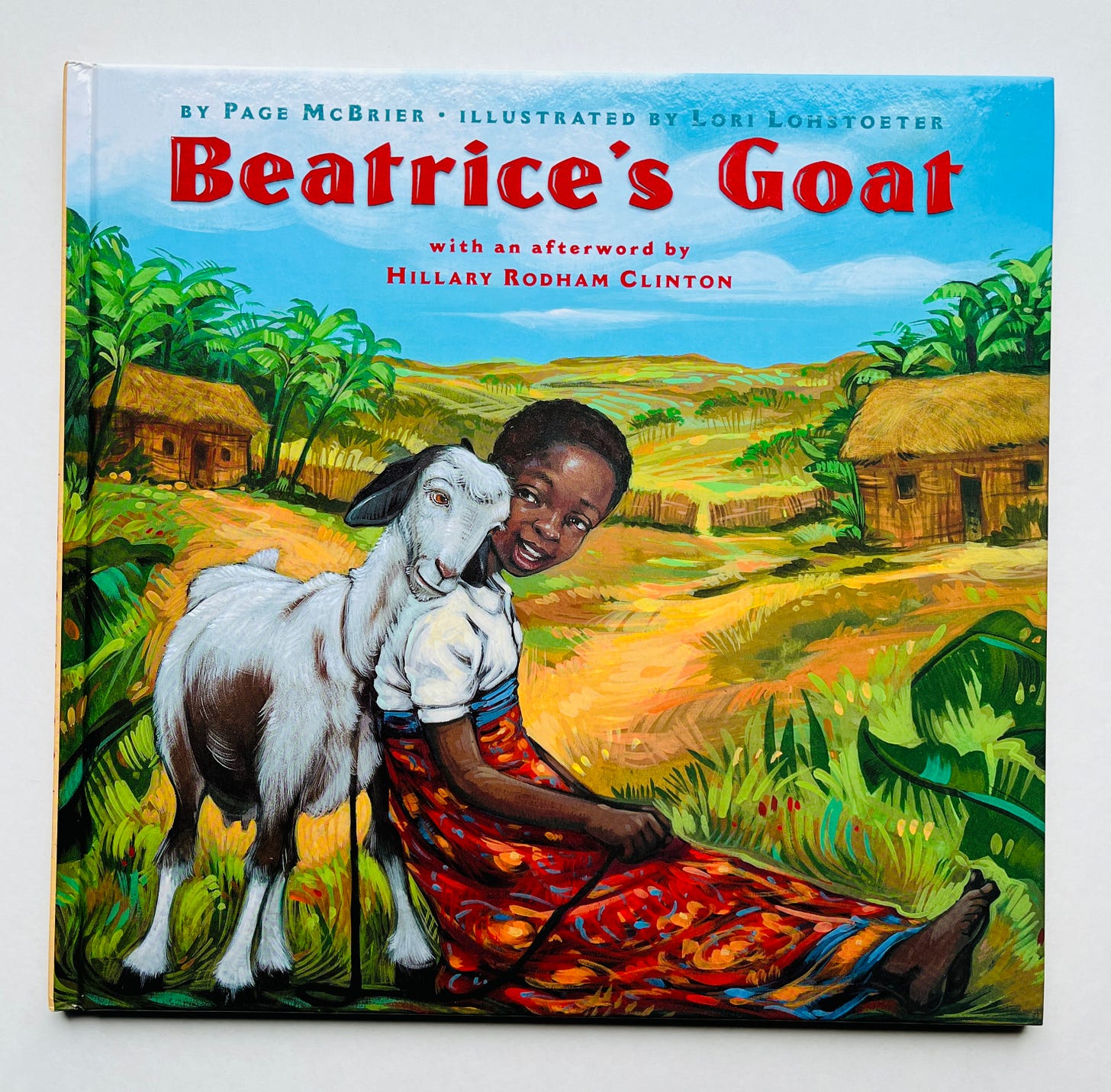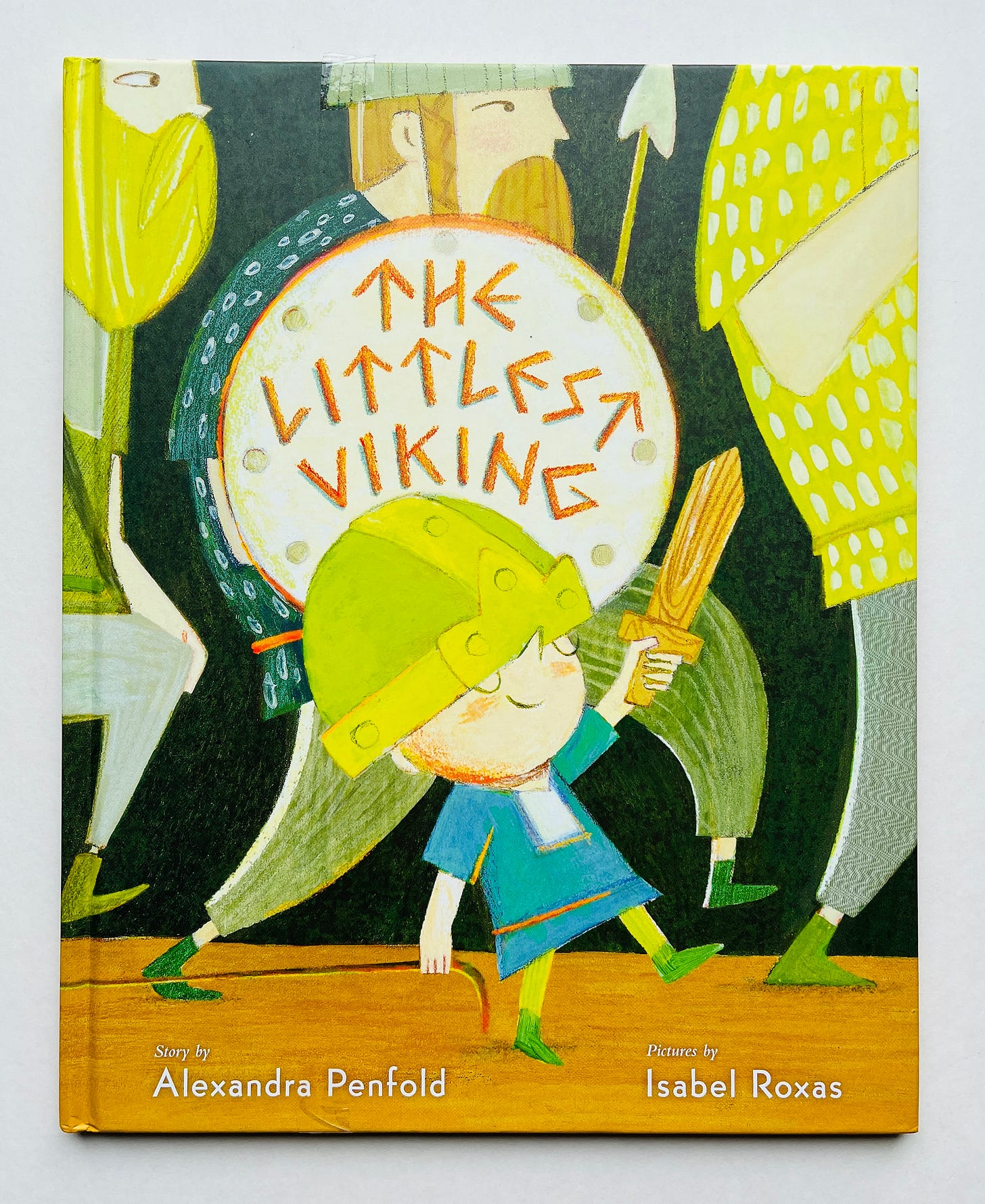Good morning, good morning, good morning!
Father’s Day is this weekend 🎁
There are only three days left (okay, four, if you’re really cutting it close) until Father’s Day and it’s not too late to give a gift that’s easy for you and helpful for him.
In the eighth edition of Jim Trelease’s famous title, The Read-Aloud Handbook — which I reviewed in issue No. 12 — Cyndi Georgies offers an entire chapter on “The Importance of Dads,” writing:
“The time a father spends with his child is one of the most consistent links to the development of literacy skills throughout the child’s schooling. Fathers have a profound impact on their child’s desire for reading and their success in doing so… bedtime read-alouds create one of the strongest bonding times, especially between fathers and sons. This positive influence is also experienced by their daughters.”
What better way to encourage this than a newsletter that helps dads (and uncles and grandfathers and anyone else who fathers, in whatever way you define that) find engaging books to read to the children in their life? Consider a gift subscription to this newsletter.
(Side note: you can give yourself a Father’s Day present. It’s allowed.)
If you purchase a gift subscription and would like to have a physical object to tuck into an envelope, wrap, or attach to an email, feel free to print this handy, official Can we read? PDF.
Dads will thank you — and I thank you. Your continued support means the world to me.
Also
Last Friday Randee Bergen of Busy Bee Kindergarten — a newsletter in which Randee, a teacher with 30+ years of experience, shares her expertise, ideas, and photos and videos of her classroom with fellow educators (and anyone else vested in ensuring the best foundation for 5 and 6yos) — shared a post I wrote for her about recommended read-alouds for kindergarteners.
I had fun pulling together some excellent titles (which may be familiar to you if you’ve been with me since the beginning of Can we read?), and included a longer list of additional suggestions, for those of you who like to have ideas in hand when you go to the library or bookstore.
Now, let’s get to my recommendations for today (not limited to kindergarteners, though I really, really love kindergarteners).
My Name is Yoon by Helen Recorvits, illustrated by Gabi Swiatkowska (1993)
Not long after Yoon and her family settle in after their move from Korea, Yoon’s father explains to her that soon she will go to her new school, and so he teachers her to write Y-O-O-N in English. Yoon dislikes the lines and circles of her name in English and prefers it in Korean, where it looks happy, and “the symbols dance together,” meaning Shining Wisdom.
Her father reassures her that the English version doesn’t change the meaning of her name, but Yoon is not pleased. She doesn’t want to learn a new way. She wants, in fact, to go home.
Alas, she does have to go to school, and it’s there that she finds new words, ones she likes better than her name — CAT (which makes her want to hide in a corner) and BIRD (which makes her wish she could fly home to Korea). It isn’t until she discovers CUPCAKE — and a kind new friend to laugh with — that she considers there are some things about America to like, and in this acceptance, she finds a way to inhabit the name Yoon.
Swiatkowska’s muted yet luminous gouache paintings make every aspect of this tender story come to life — Yoon’s sadness and frustration and loneliness, her curiosity despite his misgivings, her pleasure in connecting with someone at last. Its messages about the struggle to embrace change shed light on the immigrant experience (and help all of us put ourselves in another’s shoes) but also teach something about identity: who are we when we leave home? Are we still ourselves wherever we go? And that eternal question: what’s in a name?
This one is best for elementary-aged children who can better understand Yoon’s situation and empathize with her effort to hang onto who she is and her “Shining Wisdom” that does not change no matter the language or country.
Beatrice’s Goat by Page McBrier, illustrated by Lori Lohstoeter (2001)
In the time before Mugisa, Beatrice’s goat, Beatrice spends her days helping her mama work in the fields, tending the animals and younger children, and grinding the cassava flour they take to the market in their town, Kisinga, to sell. Once in awhile, Beatrice would stop by the schoolhouse, pretending she was a student, longing to go inside, but she lacks the money to pay for books and a uniform.
And this is how a single small goat — gifted to the family — changes Beatrice’s life.
By selling Mugisa’s milk, Beatrice’s purse gets full day by day, week by week, until eventually, the previously unthinkable happens: Beatrice’s mother counts up the money and declares that they finally have enough to send Beatrice to school.
This true story of Beatrice Biira, a Ugandan girl living in poverty whose life is transformed by the gift of a goat from the nonprofit world hunger organization Heifer International (which a note at the front explains) is told, along with Lohstoeter’s vivid acrylic illustrations, in a way children 5yo and up can perfectly understand. Though many picture books about economic class shy away from overt explanations about a lack of money, this one addresses the issue head-on and introduces the concept of microloans in an accessible way. (It is also among a small handful of books about Uganda.)
I’d love to see this one shared in homes, classrooms, and libraries far and wide. Its message — that hard work coupled with generosity can make even the most impossible things possible — is hopeful and bright.
Library Lion by Michelle Knudsen, illustrated by Kevin Hawkes (2006)

“One day, a lion came to the library. He walked right past the circulation desk and up into the stacks.”
So begins the story of a lion in the library — a turn of events Mr. McBee, one of the librarians, can barely tolerate. He runs immediately to tell Mrs. Merriweather, the head librarian. She asks, “Is he breaking any rules?” Well, no, he admits. Then, it’s decided, leave him be.
Since there aren’t any rules about lions in the library, no one is sure what to do — the lion sniffs the card catalog (be still my heart!), rubs his head against the new book collection, takes a cat nap in the story corner, and listens along with all the children during story hour. The staff and patrons are perplexed, but eventually, they accept him, and he starts to help out around the place.
One day, Mrs. Merriweather falls off a stool while shelving some books, and the lion runs to find help, roaring in Mr. McBee’s face — which doesn’t go over well, as you may imagine. The pedantic librarian runs to tattle on the lion to Mrs. Merriweather, only to find her lying on the floor, injured, and none too pleased that he is so focused on the rules when there are, sometimes, more important things to worry about.
There is a little more story than this, but I won’t ruin it for you — you’ll have to get your hands on this wonderful tale to find out what happens in the end, and to enjoy Hawkes’ charming illustrations, done in acrylic and pencil. (Though it’s never explicitly stated, his depiction of a stone lion perched next to the library’s front steps evokes Patience and Fortitude, the stately guardians of the main branch of the New York Public Library — whom I made a pilgrimage to see for my birthday seven years ago, like the book- and library-obsessed weirdo that I am.)
I’ve been trying for ages to convince my often-inflexible 8yo that while following rules is mostly important, you don’t always have to do what people tell you to do; it’s okay, perhaps even desirable, to question those in power — and definitely, some rules are meant to be broken. (I have my courageous, spirited mother to thank for these anti-authority tendencies.) This book is one to skip until you’re past the toddler stage, when you decidedly don’t want to encourage them to think too hard for themselves — they do plenty of that already, am I right? — but seek it out for preschoolers who can sit through longer stories, and any elementary-aged kiddos: its message is a subversive and important one, and more than this, it’s a book to cherish.
The Littlest Viking by Alexandra Penfold, illustrated by Isabel Roxas (2018)
Sven is the littlest Viking, and life is good — he has the loudest cry, the fiercest set of teeth, he pillages whatever he wants. And he loves stories — hearing them and, eventually, telling them himself.
Until one day, no one has time for Sven’s tales. What’s up with this? Everyone is running around, getting ready, preparing for someone special.
A fair maiden?
No! A warrior princess. A loud, sad one who is not entertained by “shiny plunder” (toys dangled in her face), “a ride on the great ship” (a boat trip to lull her), or “the skald’s song” (her father, singing along to a basic harp).
(If you haven’t yet guessed, the newcomer is Sven’s baby sister.)
So Sven — like any good big brother or brave Viking — steps in. He tells a tale of a mighty warrior princess, of future voyages and adventures two hearty souls might have together. His trick works, so he does it again and again, every day, and he finally realizes that though he’s no longer the littlest Viking, he doesn’t mind it one bit.
Roxas’ green-toned gouache, colored pencil, and digital illustrations are active and funny (she is especially great at facial expressions) and add a great deal of humor to this sweet, clever story of a new baby and warm sibling love. It’s a welcome addition to the small pile of books that show an expanding family in a positive light (there are plenty more out there if you are looking for narratives about older siblings who are mad that the baby has arrived). It’s such a fun read and will delight toddlers and preschoolers who are getting ready for — and possibly struggling a bit with — small newcomers of their own.
That’s all for today!
Every Wednesday issue is free, so if you know someone who may like this newsletter — other parents, caregivers, family members, educators, librarians, therapists, coaches, anyone who supports or works with children — please pass it on! Word of mouth will forever be the love language of the internet. (I say it all the time because it’s true, and it really does help!)
I appreciate you.
Sarah








Hi Sarah! Great issue, as always. I've been a little out of commission so am just now getting to this. Thank you for the mention of Busy Bee Kindergarten. I look forward to writing a piece for your substack soon. Also, I am going to purchase Beatrice's Goat for my classroom. I did not know about this book but it sounds like an excellent one to support my discussions with my students about how not ALL children in the world get to go to school and how it's not always free either. They have such wonder for this concept, and this book, I predict, will really get them thinking and appreciating their schooling even more.
The love language of the internet! I love that!